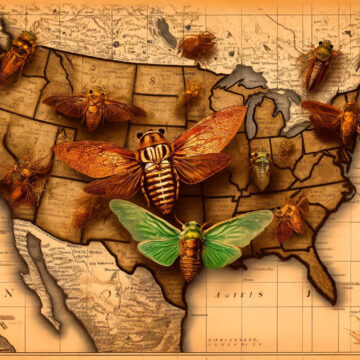Imagine witnessing a natural event so rare that the last time it occurred, the United States had just doubled in size through the Louisiana Purchase. This year, for the first time since that historic acquisition, two distinct cicada broods are emerging together, creating a spectacle not seen in over two centuries. This simultaneous emergence of cicada broods is not just a fascinating phenomenon for entomologists but a remarkable reminder of the historical timeline we are part of.
Category: Science
Methadone Madness: America Chose Addiction Over Compassion
Every morning, in towns and cities across the United States, lines begin to form at methadone clinics well before the sun fully rises. People with opioid use disorder shuffle in for their daily dose of a medication that, while intended to save their lives, has become a lightning rod for criticism and controversy. Somewhere behind these quiet scenes, corporate balance sheets bulge, government funds flow, and the question lingers: Is America truly seeking to help those caught in the devastating grip of opioid addiction—or has the nation’s healthcare system prioritized profit over compassion? The answer, many argue, is that a cycle of dependence has been painstakingly preserved, even as the death toll from opioid-related overdoses climbs year after year. This is a story of misguided priorities, misplaced funds, and the glaring gap between what could be done to alleviate a crisis and what is actually happening.
The Curvature of Reality: Earth’s Shape Explored
In the 21st century, humanity stands on the precipice of an unprecedented era of discovery. With rovers trundling across Martian plains and probes transmitting invaluable data from the outer reaches of our solar system, our knowledge of the cosmos continues to expand. Yet, despite these advancements, there remains a contentious debate on a fundamental premise: the shape of our Earth.
The Tale of Joice Heth: P.T. Barnum’s First Great Hoax
Setting the Stage for Spectacle The cobblestone streets of New York City, 1835, echoed with the clatter of horse-drawn carriages and the constant hum of merchants, hawkers, and onlookers. On every corner, something extraordinary vied for attention: from traveling entertainers juggling fire, to street preachers proclaiming salvation, to peddlers offering miracle cures. Yet amidst this...
Methadone at IG Farben—Gustav Ehrhart & Max Bockmühl
During the late 1930s, Gustav Ehrhart and Max Bockmühl, both research chemists working at IG Farben’s Hoechst laboratories, successfully synthesized a novel compound later known as methadone. Although initially developed to mitigate Germany’s reliance on imported opiates, methadone’s significance would transcend its wartime origins, ultimately emerging as a crucial medication in modern pain management and opioid dependence treatment. Despite the obscurity of their personal histories, Ehrhart and Bockmühl’s pioneering achievement demonstrates how scientific discovery can evolve far beyond the political and historical circumstances of its inception, offering vital therapeutic benefits to countless patients worldwide.




